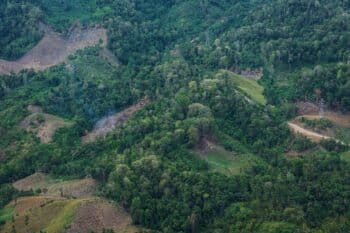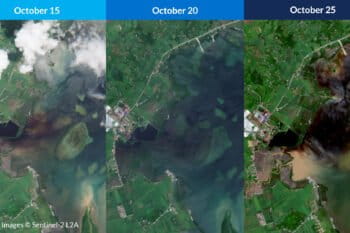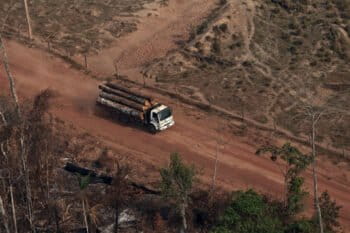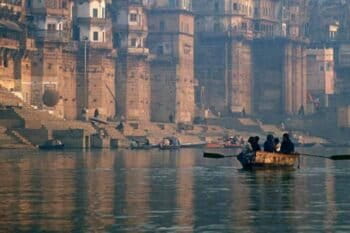The Ganga River, which sustains the lives of at least 600 million people, is facing its worst dry spell and lowest streamflow in 1,300 years, according to a recent study, reports Mongabay India’s Simrin Sirur.
Researchers extrapolated the Ganga’s water levels going back to the year 700 C.E. using a combination of paleoclimatic and historical data and hydrological modeling. They found that between 1991 and 2020, the river basin experienced a higher frequency of dry years compared to all other studied 30-year periods in the past.
The reconstruction of river levels highlighted other known periods of drought in India, including during the Bengal famine from 1769-1771, and major famines from the 14th century that caused widespread crop failures and human deaths.
However, in 1991, the river’s streamflow suddenly declined by 620 cubic meters per second (about 21,900 cubic feet per second) — a new low compared to previous years. Between 1991 and 2020, the river experienced four droughts lasting at least three years. Historically, such long-term droughts were spaced 70 to 200 years apart, the authors noted.
This unusual drying is driven partly by decreasing monsoon precipitation over the river basin. While past droughts due to reduced monsoon rains could be explained by natural climate variations in sea surface temperatures in the Indo-Pacific Oceans, climate change likely plays a role today, the researchers added.
One hypothesis for the current decline “is that the land-ocean contrast has weakened because of global warming, which has in turn weakened the monsoon and reduced precipitation over the GRB [Ganga River Basin],” said Vimal Mishra, study co-author and a professor at the Indian Institute of Technology, Gandhinagar.
“[W]hat we’ve shown is that the declines today are unlike declines due to natural climate variability as seen in the past, and that we cannot expect this kind of aberration to resolve on its own over time,” Mishra added.
Increased aerosols — fine solid or liquid particulates in the air that reflect solar radiation — have also had a cooling effect over the river basin, leading to a decline in precipitation, he said.
“Extraction of groundwater is yet another possible reason for the declines in streamflow,” Mishra said. Recent studies have found that underground aquifers, not glaciers as previously thought, are the primarily source of water for the Ganga’s summer flow. The overextraction of groundwater for agriculture and other development needs is a major threat to groundwater recharge. Other studies suggest that without irrigation-related groundwater extraction, the Ganga’s flow would likely be rising each year.
The Ganga Basin extends through India, Nepal, Bangladesh and China, sustaining a population of at least 600 million.
Madhavan Rajeevan, a meteorologist and vice chancellor of Atria University, Bengaluru, who wasn’t involved in the study, said that given the Ganga’s socioeconomic importance, “we should be worried about such drastic changes to the river.”
Read the full story by Simrin Sirur here.
Banner image: Ganga River at Varanasi ghat by Babasteve via Wikimedia Commons (CC BY 2.0).





